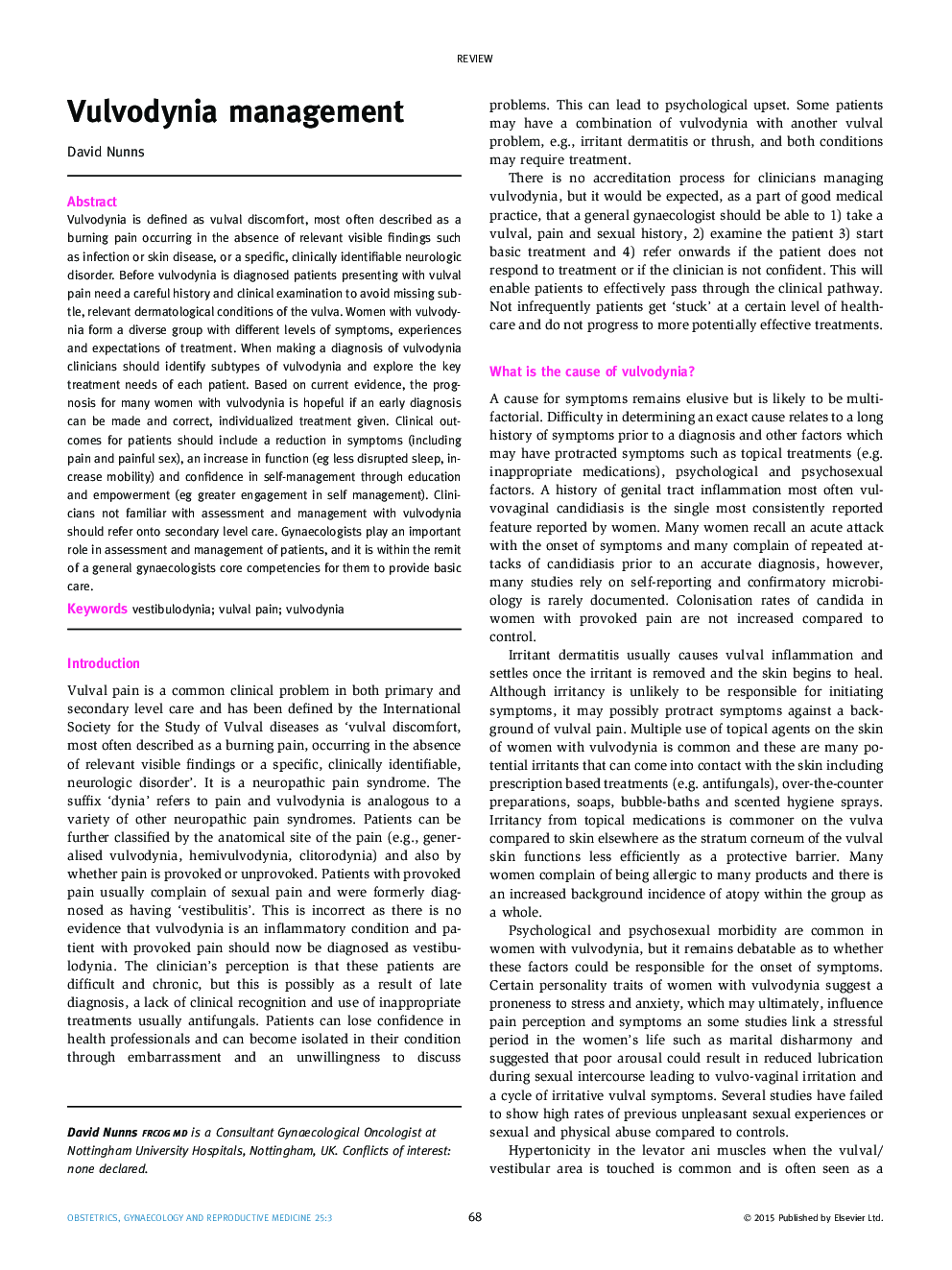| Article ID | Journal | Published Year | Pages | File Type |
|---|---|---|---|---|
| 3966779 | Obstetrics, Gynaecology & Reproductive Medicine | 2015 | 7 Pages |
Vulvodynia is defined as vulval discomfort, most often described as a burning pain occurring in the absence of relevant visible findings such as infection or skin disease, or a specific, clinically identifiable neurologic disorder. Before vulvodynia is diagnosed patients presenting with vulval pain need a careful history and clinical examination to avoid missing subtle, relevant dermatological conditions of the vulva. Women with vulvodynia form a diverse group with different levels of symptoms, experiences and expectations of treatment. When making a diagnosis of vulvodynia clinicians should identify subtypes of vulvodynia and explore the key treatment needs of each patient. Based on current evidence, the prognosis for many women with vulvodynia is hopeful if an early diagnosis can be made and correct, individualized treatment given. Clinical outcomes for patients should include a reduction in symptoms (including pain and painful sex), an increase in function (eg less disrupted sleep, increase mobility) and confidence in self-management through education and empowerment (eg greater engagement in self management). Clinicians not familiar with assessment and management with vulvodynia should refer onto secondary level care. Gynaecologists play an important role in assessment and management of patients, and it is within the remit of a general gynaecologists core competencies for them to provide basic care.
